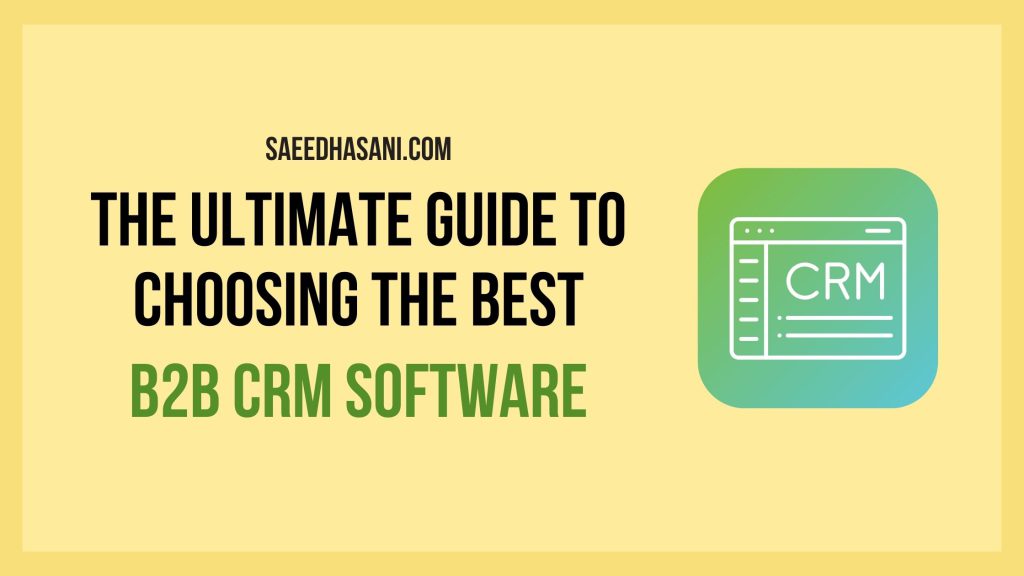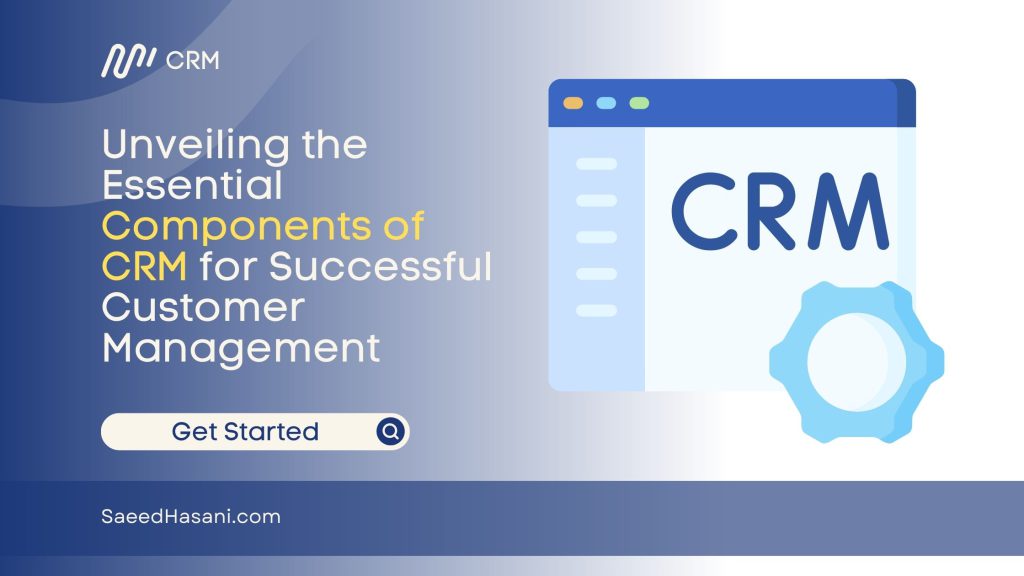ICP Sales: 3 Strategies to Use Your ICP for Finding and Converting Prospects!

Have you ever wondered why some businesses seem to magnetically attract the right customers, while others struggle to make a single sale? The secret lies in mastering ICP sales strategies.
An Ideal Customer Profile (ICP) is your blueprint for sales success, guiding you to understand deeply and connect with those who need your product the most.
By integrating ICP sales tactics, you’re not just selling; you’re solving real problems for your ideal customers, paving the way for unparalleled growth and customer satisfaction.
Dive into our blog post to uncover how you can craft and leverage an ICP for sales that not only meets but exceeds your business goals.
Content Overview:
What is an ICP in sales?
In sales, an ICP stands for Ideal Customer Profile. This concept is crucial for businesses as it defines the perfect customer for what a company is selling.
Creating an ICP involves identifying the specific attributes, characteristics, and other defining factors of the businesses or individuals who are most likely to benefit from and purchase your product or service.
This profile can include demographic information, geographic location, industry, company size, budget, pain points, and buying behavior among other characteristics.
Having a well-defined ICP helps companies tailor their marketing and sales efforts more effectively, focusing resources on the prospects that are most likely to convert into customers.
It improves efficiency in lead generation, prioritization, and outreach strategies, ensuring that sales teams are targeting the right people with the right message. This, in turn, can lead to higher conversion rates, increased customer satisfaction, and better overall sales performance.
Benefits of ICP sales
Implementing Ideal Customer Profiles (ICPs) in your sales and marketing strategy offers a myriad of benefits that can significantly impact the growth and efficiency of a business. Here are some key benefits of using ICPs:
- Improved Marketing Efficiency: By understanding who your ideal customers are, marketing efforts can be more targeted and personalized. This leads to higher engagement rates, more effective use of marketing budgets, and better ROI on marketing campaigns.
- Enhanced Sales Conversion Rates: Sales teams can focus their efforts on leads that match the ICP, leading to a higher likelihood of conversion. This focus ensures that the sales process is more efficient and that teams aren’t wasting time on leads that are unlikely to convert.
- Better Product Alignment: Knowing your ICP sales allows you to tailor your product development and features to meet the specific needs and pain points of your ideal customers. This alignment can improve customer satisfaction and loyalty, as well as facilitate product innovation targeted at solving real customer problems.
- Streamlined Lead Qualification Process: With a clear ICP, it becomes easier to qualify leads. Sales and marketing teams can quickly identify which prospects are worth pursuing and which are not a good fit, streamlining the lead qualification process and saving valuable time.
- Higher Customer Lifetime Value (CLV): Customers who closely match your ICP are more likely to find value in your product or service, leading to longer-lasting relationships. This can increase the customer’s lifetime value through repeat business, upselling opportunities, and referrals.
- Increased Customer Satisfaction and Loyalty: Products and services tailored to the needs of your ideal customer lead to higher satisfaction rates. Satisfied customers are more likely to become loyal advocates for your brand, providing valuable word-of-mouth marketing.
- Strategic Alignment Across the Organization: An ICP brings a unified focus to various departments within an organization. From product development to sales and marketing, all teams can align their strategies and goals around attracting and serving the ideal customer profile.
- Better Use of Resources: By focusing on the most promising prospects, companies can make more efficient use of their resources, including time, money, and personnel. This efficiency can lead to cost savings and allow resources to be allocated to other areas of growth within the business.
Having a well-defined ICP sales enables businesses to focus their efforts more effectively, resulting in better customer relationships, improved sales metrics, and ultimately, greater business success.
What’s the difference between sales ICPs vs. customer personas?
Sales Ideal Customer Profiles (ICPs) and customer personas are both tools used to target and understand potential customers, but they serve different purposes and contain different types of information.
Understanding the distinction between the two can help businesses more effectively tailor their sales and marketing efforts.
Ideal Customer Profile (ICP)
- Definition: An ICP is a detailed description of a company or an individual that would benefit the most from your product or service. It represents the perfect customer for whom your product or service is intended.
- Focus: The focus is on the firmographic and demographic characteristics of accounts (for B2B) or broad demographic details (for B2C) that make them the ideal fit for what you’re selling. This can include industry, company size, revenue, location, and other organizational attributes.
- Purpose: The primary purpose of an ICP is to guide lead generation and qualification. It helps sales and marketing teams prioritize their efforts on the most promising prospects that are likely to convert and become valuable customers.
- Usage: Used to segment the market, tailor marketing messages, and focus sales efforts on the right companies or individuals.
Customer Persona
- Definition: A customer persona is a semi-fictional character that represents a segment of your target market. It is based on market research and real data about your existing customers.
- Focus: The focus is on the psychographic and behavioral aspects of potential buyers. This includes motivations, goals, pain points, buying behaviors, and personal preferences.
- Purpose: The purpose of creating customer personas is to understand the needs, challenges, and decision-making processes of your target audience. This understanding helps in crafting more personalized and effective marketing messages and product offerings.
- Usage: Used to guide content creation, product development, and the overall customer experience. It ensures that the business’s efforts are aligned with the needs and preferences of different customer segments.
Key Differences
- Scope: ICP sales are broader and more focused on identifying the most valuable accounts or customer segments, while personas dive deeper into the characteristics and behaviors of individuals within those segments.
- Application: ICPs are primarily used in the initial stages of lead generation and qualification, helping to focus efforts on high-value targets. Personas are used throughout the marketing and product development process to ensure messages and offerings are tailored to specific needs and preferences.
- Detail Level: ICPs generally deal with objective, firmographic, or demographic data, whereas personas include more subjective, psychological, and behavioral insights.
By utilizing both ICPs and customer personas, businesses can more effectively attract, engage, and convert their ideal customers, addressing both the strategic targeting of high-value accounts and the nuanced needs of individual buyers within those accounts.
How to create a revenue-driving sales ICP?
Creating a revenue-driving sales Ideal Customer Profile (ICP) involves a strategic process that focuses on identifying the characteristics of customers who are most likely to purchase your product or service and generate significant revenue for your company.
Here’s a step-by-step guide to creating an ICP sales that can help drive sales and growth:
1. Analyze Your Best Customers
- Look at Existing Data: Start by analyzing your current customer base to identify those who have brought in the most revenue, have the highest lifetime value, or have been the easiest to sell to.
- Identify Common Characteristics: Look for commonalities among these top customers. This could include industry, company size, geographic location, technology use, or any challenges they face that your product/service solves.
2. Define Firmographic and Demographic Details
- For B2B: Focus on firmographic details such as industry, company size, revenue, location, and decision-maker roles.
- For B2C: Concentrate on demographic information like age, gender, income level, education, and geographic location.
3. Understand Their Pain Points and Needs
- Identify Problems: Understand the specific problems, needs, or goals that your product or service addresses for these ideal customers.
- Solution Fit: Ensure that there is a clear fit between what your product/service offers and the identified needs or pain points.
4. Consider Their Buying Behavior
- Decision-Making Process: Analyze how these customers make purchasing decisions, including who is involved in the process and what criteria they use.
- Sales Cycle: Understand the length of the sales cycle and any triggers that initiate the buying process.
5. Evaluate Their Potential for Growth
- Upsell and Cross-sell Opportunities: Consider whether there are opportunities for upselling or cross-selling additional products or services.
- Long-term Value: Focus on customers who have the potential for long-term partnerships and continuous revenue generation.
6. Use Data and Feedback
- Leverage Data Analytics: Use data analytics tools to gather and analyze data on customer behavior, preferences, and engagement.
- Collect Feedback: Obtain feedback from sales and customer service teams about their experiences and observations of your best customers.
7. Refine and Validate Your ICP
- Test Your ICP: Use your ICP to target new prospects and observe the results. Are these prospects converting at a higher rate? Are they generating expected revenue?
- Iterate Based on Results: Be prepared to refine your ICP based on real-world results and new insights. An effective ICP is not static; it evolves as your business and market change.
8. Implement Across Your Organization
- Share Your ICP: Ensure that sales, marketing, product development, and customer service teams understand and utilize the ICP in their respective areas.
- Tailor Strategies: Use the ICP to tailor marketing campaigns, sales outreach, product development, and customer service strategies to attract and retain these ideal customers.
Creating a revenue-driving sales ICP is an iterative process that relies on continuous learning and adaptation. By focusing on customers who are most likely to generate significant revenue and have a high lifetime value, companies can more effectively allocate their resources and drive sustainable growth.
What is considered to be the ideal profile?
The “ideal profile,” particularly in the context of a sales Ideal Customer Profile (ICP), refers to a composite description of a customer that is deemed to be the best fit for a company’s product or service.
This concept can vary widely between businesses, depending on their specific products, services, markets, and strategic goals. However, the core attributes that often constitute an ideal profile can be grouped into several key areas:
1. Demographic/Firmographic Attributes:
- For B2C (Business to Consumer): Age, gender, income level, education, occupation, and geographic location.
- For B2B (Business to Business): Industry, company size (number of employees or annual revenue), location, and type of business.
2. Psychographic Attributes:
- Values, interests, attitudes, and lifestyle for individual consumers.
- Company culture, mission, and values for businesses.
3. Behavioral Attributes:
- Buying behavior, product usage patterns, brand interactions, and customer loyalty.
- Decision-making processes, procurement methods, and contract preferences for businesses.
4. Need-Based Attributes:
- Specific challenges, pain points, or needs that the product or service addresses.
- Goals or aspirations that the product or service can help achieve.
5. Technographic Attributes (especially relevant for B2B):
- Current technologies, software, or systems in use.
- Readiness to adopt new technologies or solutions.
6. Economic/Budgetary Considerations:
- Ability and willingness to spend on the solution.
- Budget cycle or fiscal considerations that might influence purchasing decisions.
7. Growth Potential:
- Potential for upselling or cross-selling.
- Likelihood of long-term engagement and repeat business.
The “ideal” in the Ideal Customer Profile signifies that customers who fit this profile are most likely to benefit from and appreciate the product or service offered, leading to higher conversion rates, customer satisfaction, loyalty, and lifetime value.
This profile helps businesses focus their marketing and sales efforts more efficiently, targeting prospects that are most likely to convert and contribute to the company’s growth.
It’s important to note that an ICP is not static; it should be revisited and revised as a company grows, markets evolve, and new products or services are developed.
Understanding and defining the ideal profile is a strategic exercise that requires insight into both the market and one’s own business capabilities and goals.
A framework for ideal customer profile development
Developing an Ideal Customer Profile (ICP) is a structured process that requires thoughtful analysis of your existing customer base, market research, and alignment with your business goals. Here’s a comprehensive framework to guide you through the development of an ICP sales:
Step 1: Internal Analysis and Review
- Review Historical Data: Analyze your current and past customers to identify those who have been most successful and profitable. Look for patterns in retention, lifetime value, and customer satisfaction.
- Product/Service Alignment: Clearly define the value proposition of your product or service. Understand the problems it solves or the desires it fulfills.
Step 2: Define Key Attributes
- Demographic and Firmographic Information: For B2B, consider the industry, company size, revenue, and location. For B2C, focus on age, gender, location, income, and education.
- Psychographic Details: Identify the values, challenges, interests, and priorities of your ideal customers.
- Behavioral Traits: Consider how your ideal customers make purchasing decisions, their buying behavior, and usage patterns.
Step 3: Research and Data Collection
- Market Research: Conduct surveys, interviews, and focus groups with your current customers lost sales, and potential customers to gather insights.
- Competitive Analysis: Look at your competitors’ customer bases to understand who they are targeting and why.
- Data Analytics: Utilize data analytics tools to gather quantitative data on customer behavior, preferences, and demographics.
Step 4: Identifying Pain Points and Needs
- Customer Challenges: List out the specific problems or challenges your ideal customers are facing that your product or service can solve.
- Goals and Aspirations: Understand the goals or outcomes that your ideal customers are striving to achieve with your product or service.
Step 5: Drafting the ICP
- Create a Detailed Profile: Combine all the information gathered into a detailed description of your ideal customer. This should include both qualitative and quantitative attributes.
- Segmentation: If applicable, create multiple ICPs to represent different segments of your target market.
Step 6: Validation and Refinement
- Test Your ICP: Use your ICP to guide marketing and sales efforts. Monitor the performance and outcomes of these efforts closely.
- Collect Feedback: Gather feedback from sales and marketing teams about the accuracy and utility of the ICP.
- Iterate: Refine your ICP based on feedback and performance data. This should be an ongoing process as your market, product, or service evolves.
Step 7: Implementation Across the Organization
- Company-Wide Alignment: Ensure that all departments (sales, marketing, product development, customer service) are aligned with the ICP.
- Customize Strategies: Tailor marketing messages, sales strategies, product development, and customer service policies to better meet the needs of your ideal customers.
Step 8: Continuous Monitoring and Updating
- Market Changes: Stay aware of changes in the market that might affect your ideal customer’s behavior or needs.
- Adapt and Evolve: Regularly review and update your ICP sales to reflect any changes in your business strategy, market conditions, or customer feedback.
This framework provides a structured approach to identifying and understanding your ideal customers. It’s crucial to view the ICP as a living document that evolves over time, helping your business stay aligned with your most valuable customers’ changing needs and preferences.
3 Strategy for using your ideal customer profile to find sales prospects
Leveraging your Ideal Customer Profile effectively can transform your sales process, making it more efficient and targeted. Here are three strategic approaches to using your ICP to find and attract the right sales prospects:
1. Tailored Content Marketing and SEO Strategy
- Create High-Value Content: Develop and share content that addresses the specific needs, pain points, and interests of your ICP. This includes blog posts, whitepapers, case studies, and videos that provide solutions or insights relevant to your ideal customers.
- Optimize for Search: Use SEO strategies to make your content easily discoverable by your ICP. Research and incorporate keywords and phrases that your ideal customers are likely to use when searching for solutions to their problems.
- Leverage Social Media: Identify which platforms your ICP is most active on and share your content there. Engage with users, join relevant conversations, and position your brand as a thought leader in your industry.
2. Targeted Advertising and Social Media Campaigns
- Utilize Platform Targeting Features: Platforms like LinkedIn, Facebook, and Google Ads offer sophisticated targeting options that allow you to serve ads directly to users who match the demographic, firmographic, and psychographic characteristics of your ICP.
- Custom and Lookalike Audiences: Use existing customer data to create custom audiences on social media platforms. Then, leverage these platforms’ lookalike audience features to reach new prospects who share similar attributes with your best customers.
- Retargeting Campaigns: Implement retargeting campaigns to stay in front of visitors who have engaged with your content or visited your website but haven’t made a purchase. This keeps your brand top of mind and encourages them to take the next step.
3. Strategic Sales Outreach and Networking
- Direct Outreach: Use the detailed attributes of your ICP to find and directly contact potential leads through email or social media. Tailor your messaging to reflect how your product or service addresses their specific needs and challenges.
- Networking and Events: Attend industry conferences, seminars, and networking events where your ICP is likely to be present. Utilize these opportunities to build relationships and introduce your solution directly.
- Referral Programs: Encourage your existing customers, especially those who closely match your ICP, to refer others from their network. Offer incentives for referrals that convert into customers, leveraging the trust already built with your current customer base.
Implementing These Strategies
To effectively implement these strategies, it’s important to have a deep understanding of your ICP and continuously refine it based on market feedback and sales outcomes.
Collaboration between your sales, marketing, and product teams is crucial to ensure a unified approach to targeting and attracting your ideal prospects.
By focusing on the needs and preferences of your ICP, you can create a more focused and efficient sales process that leads to higher conversion rates and better customer relationships.
Conclusion
Crafting a robust Ideal Customer Profile (ICP) is the cornerstone for any business aiming to enhance its sales and marketing efforts.
By meticulously identifying and understanding the attributes and needs of the ideal customer, companies can streamline their strategies, ensuring resources are optimally utilized to engage prospects most likely to convert.
This strategic focus not only elevates conversion rates and customer satisfaction but ultimately drives substantial business growth, highlighting the indispensable value of well-defined ICP sales in achieving sales excellence and sustainable success.







Responses